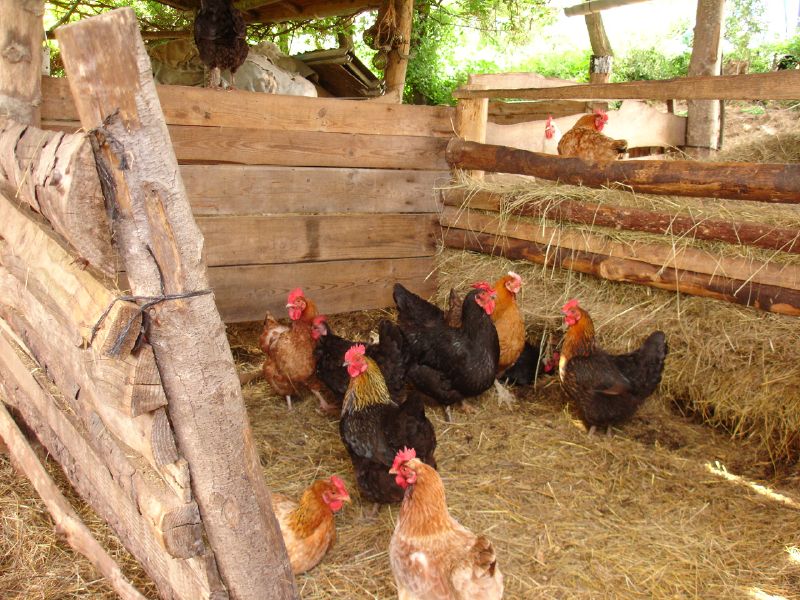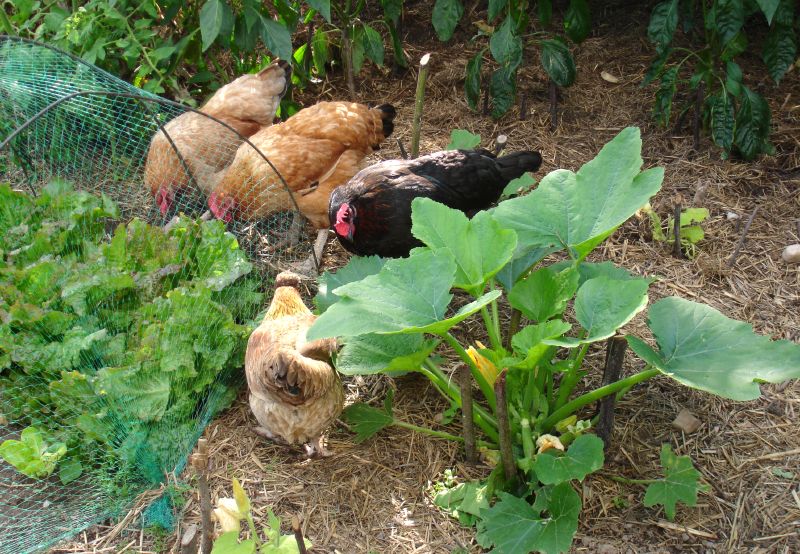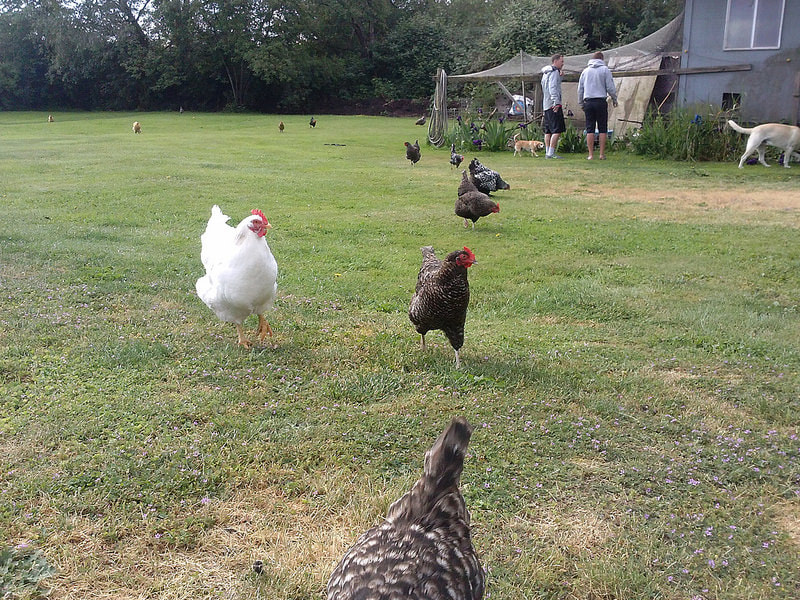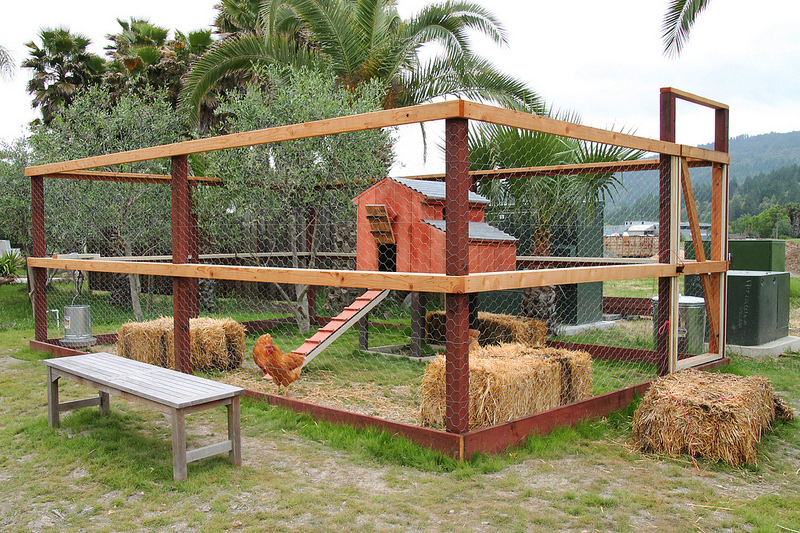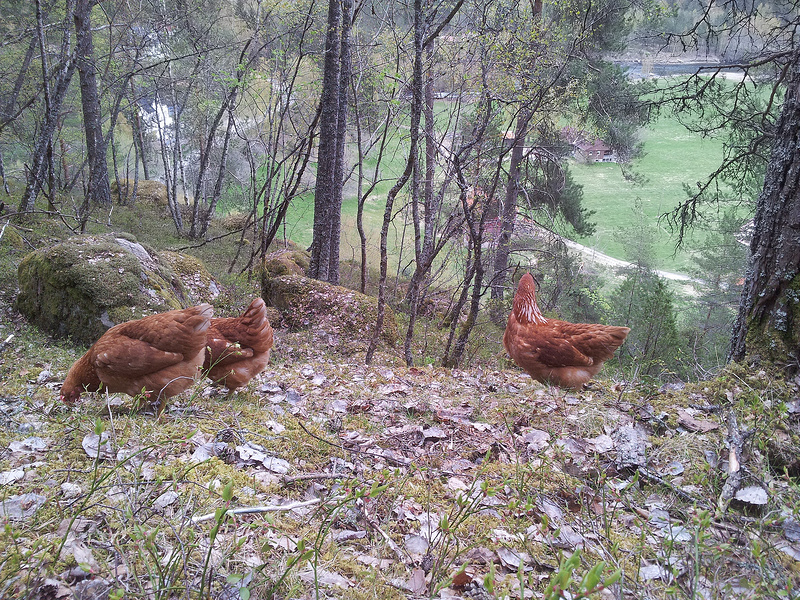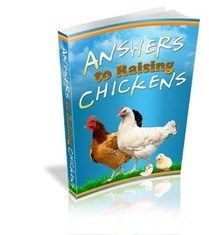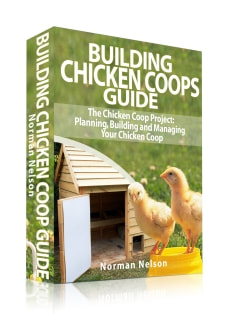Keeping Chickens
Chickens are most numerous domesticated animal on the planet with an estimated 19 billion in the world today. There is good reason these birds are so important to us journeying with us on our journey from hunter gatherers to settled agricultural settlements. Chickens originated from the jungle fowls of South East Asia and are a truly successful species of bird. They have the ability to eat almost anything and produce a generous amount of eggs as well as keeping human pests at bay.
If you go to any modern city or basic rural community the chicken is everywhere. The droppings of chickens provide some of the best organic fertiliser available which is useful for food production. One of the most sustainable aspects to keeping chickens is if they are allowed to range a large area they have the ability feed themselves off the land feeding on insects, worms, grubs, spiders, grasses, leaf material, seeds, berries and even carrion. They have an amazing ability to turn the environment into nutritious eggs rich in omega 3 fatty acids and protein.
Some of the domestic chicken breeds today can lay over 300 eggs a year meaning you can almost have an egg for every day of the year per chicken for you and your family. Chickens can also be raised for meat with some breeds specifically bred for meat production. In an urban farming situation it has to be noted that male’s cockerels will call loudly especially every morning at sunrise. This can be aggravating to neighbours so this must be taken into consideration.
For egg production a male does not have to be present the hens will stay lay delicious eggs but it simply means you will not get chicks hatching if a hen becomes broody. Fertilised eggs can be bought if you wish raise chickens from chicks but you can also buy 1 day old hatchlings which will further reduce your need for a cockerel.
Chickens are usually fed a pellet based food called layers pellets. This contains all the nutrition they need to be healthy but it is always advised to add some interest to their diet to keep them stimulated. You will need to provide your chickens with some form of calcareous shell, oyster shells or crushed egg shells as they need to consume this to form the shells on their own eggs. They will also need grit, this is important in the chicken’s digestion process which takes place within the chicken’s gizzard. In an urban environment such as urban farming chickens can have food scraps which save having to waste unwanted food items.
It is important that your chicken coop and enclosure are a good size for the amount of chickens you intend to keep and they are secure so predators cannot break in easily. I prefer to build an avery system which doubles up as a fruit cage. This way the chickens can let themselves in and out of their run back to the coop at will. Every now and then it is good to let your chickens roam around the garden or plot this will allow them to search for pest and scratch around looking for worms. Chickens will always go back to roost in the evenings so don’t worry about them not going back to the enclosure.
Keeping chickens is one of the most fun and productive of pursuits. It is such an extensive subject I recommend anyone contemplating getting chickens purchase a good book on the subject and thoroughly educate themselves before buying chickens or chicken keeping equipment.
Chicken Manual: The Complete Step-by-step Guide to Keeping Chickens is the first book I ever read before considering buying my own chickens. I have to say it gives a complete overview of everything you need to know about successful chicken keeping and is a must have for the beginner or as reference to a more experienced keeper. The chicken manual is exactly what the cover suggests a great resource and one you will go back to during your chicken raising career.
Answers To Raising Chickens is a full guide to keeping chickens with more in depth tips and tricks for more large scale chicken farming. As well as the essential information for keeping chickens this ebook shows you how to utilise the landscape around your chickens to get the best out of them. It also shows you many money and energy saving ways of producing more out of your chickens including butchery and breeding show birds.
The Building Chicken Coops Guide is probably the most diverse DIY chicken coop resource anywhere. This Ebook displays many different designs from industrial scale chicken homes to small back yard coops. The construction diagrams are beautifully illustrated and easy to follow. Building your own chicken coop is extremely rewarding as you get to engineer your birds happy lifestyle and reap the rewards every day. Not only do I find the designs useful in a prescriptive way the provoke ideas of creativity regarding your own chicken keeping setups. As I learned myself there is a lot that goes into successful chicken coop design. This book is crammed with information on the considerations of happy chicken living environments. What is so good about this offer is for a reasonable price you get 5 free Ebooks on chicken keeping thrown in.
